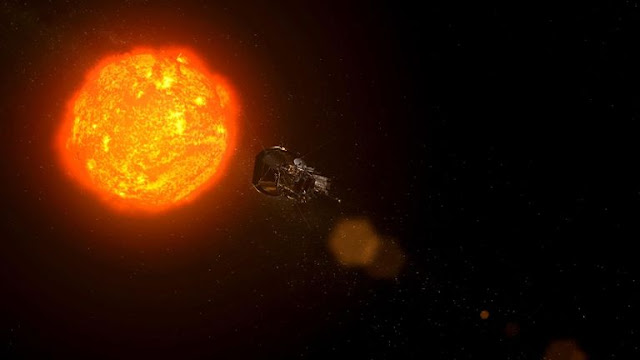During the flyby, NASA lost contact with the Parker Solar Probe; contact will be restored on December 27.
On Tuesday, NASA's Parker Solar Probe became the first artificial object to approach the Sun as closely as ever. Parker should have collected crucial information about the Sun's outer atmosphere by traveling as close as 6.1 million kilometers. Since the space agency had to cut off contact with the craft during the trip, proof of these accomplishments should be received by December 27. The spacecraft reportedly achieved a speed of 6,92,000 kmph during this flyby, making it the fastest object ever made by humans.NASA Sets New Records with the Parker Solar Probe
The official "NASA Sun & Space" handle verified that the Parker Solar Probe had started its closest-ever approach to the Sun in a message on X (previously known as Twitter). The space agency did note in a separate article shortly after the flyby began that communication with the spaceship had been cut off and that reconnection would not be possible until December 27, when it was expected to transmit its first signal to the observatory on Earth.
It's interesting to note that Parker Solar Probe has previously flown near the Sun. The spacecraft conducted its 22nd attempt at a flyby on Christmas Eve, and it plans to make four more in 2025.Other noteworthy attempts include the one on September 21, 2023, when it became the fastest man-made object with a speed of 6,35,266 kmph. It shattered its own record once more on Tuesday.
Parker exploited Venus's gravity enhancements to conduct these incredibly near flybys. In order to obtain tremendous acceleration and go closer to the Sun, the NASA spacecraft would orbit the second planet in the solar system. Since its inception in 2018, it has performed seven such rounds around Venus, with the most recent one taking place in November.
NASA's Parker Solar Probe Gathers Crucial Information from the Sun
The Parker Solar Probe is not merely setting new records by approaching the Sun and enduring temperatures of up to 980 degrees Celsius. NASA is working to find answers to the major problems that scientists have yet to solve.
The Sun's outer atmosphere, or corona, is the subject of the greatest mystery. According to the traditional model of stars, the temperature increases with proximity to the core. The corona, however, doesn't seem to be abiding by this regulation. Researchers have shown that the corona can reach temperatures of over 1.1 million degrees Celsius at a specific distance from the Sun, but that the temperature drops to about 4,100 degrees Celsius at a distance of only 1,000 miles.
Although scientists are now unsure of the reason for this anomaly, it suggests that there should be another process causing decreasing temperatures. In addition, the NASA spacecraft is imaging and gathering data on coronal mass ejections (CME), the main cause of Earth's solar or geomagnetic storms.
In addition to affecting electric grids and delicate electronic devices like pacemakers and supercomputers, these storms have the potential to interfere with satellite signals, mobile devices, and Internet connectivity. Despite the fact that CME ejections happen often on the Sun, scientists currently lack the data necessary to create any prediction models.








0 Comments